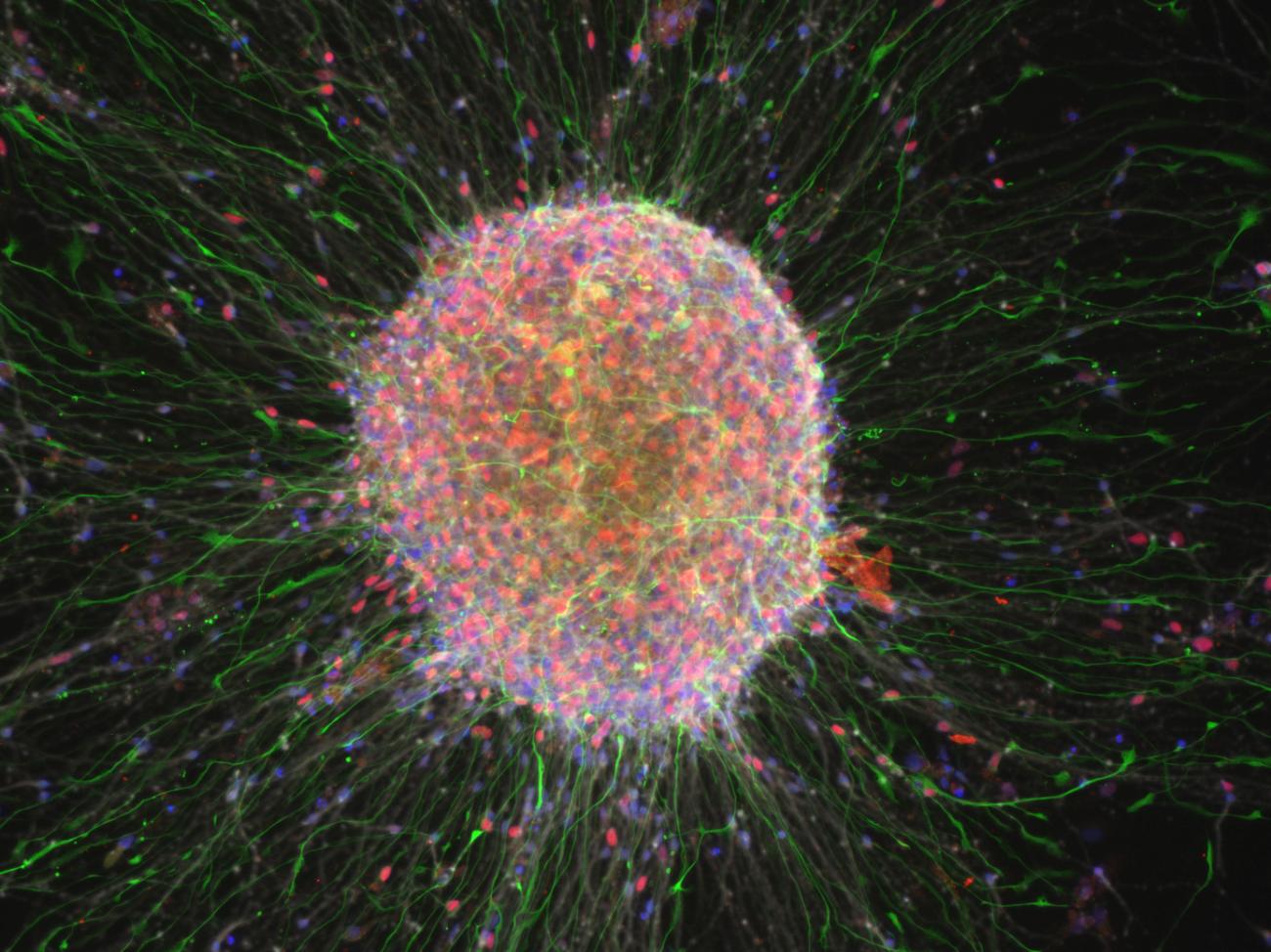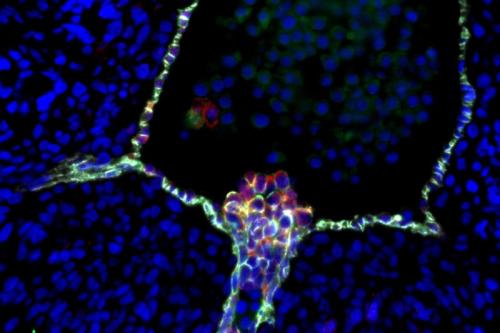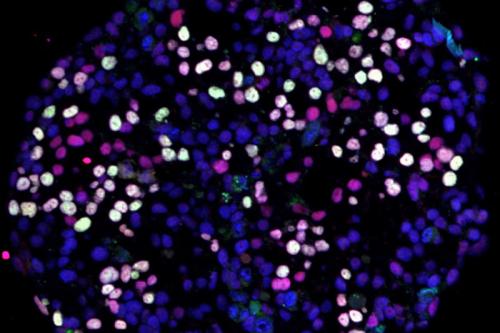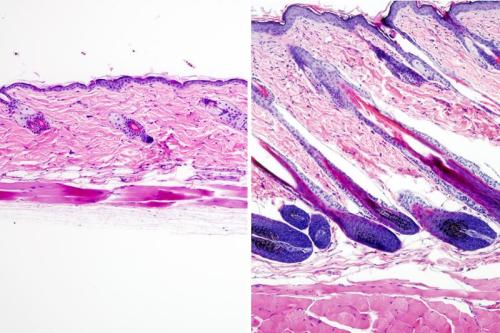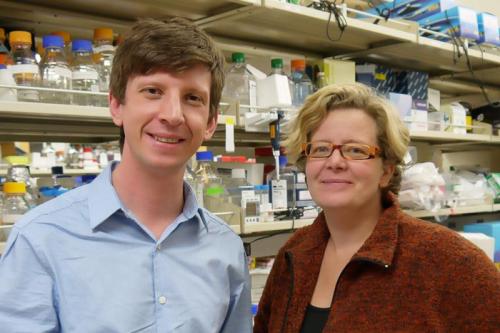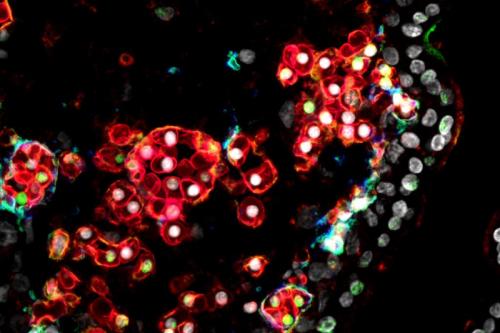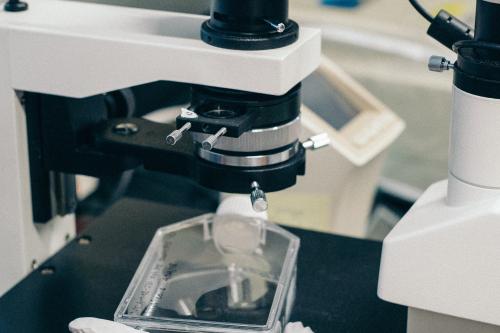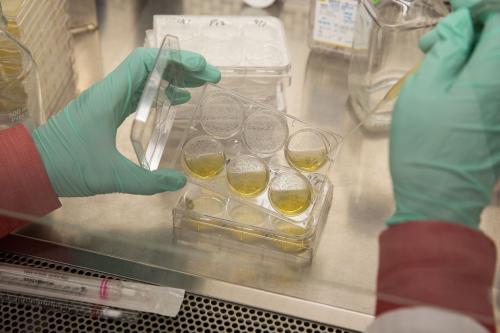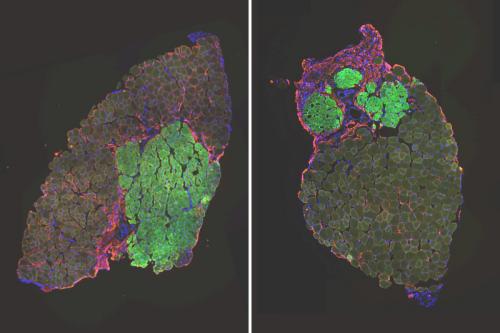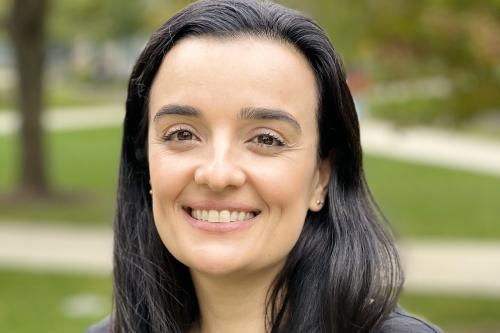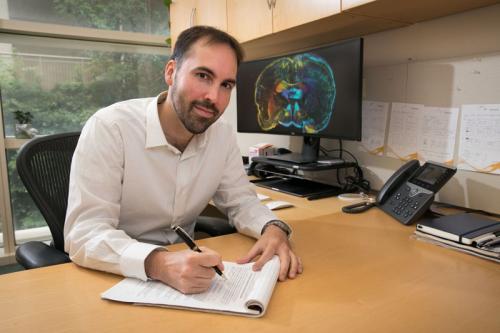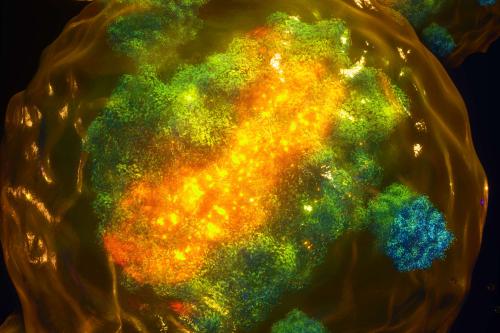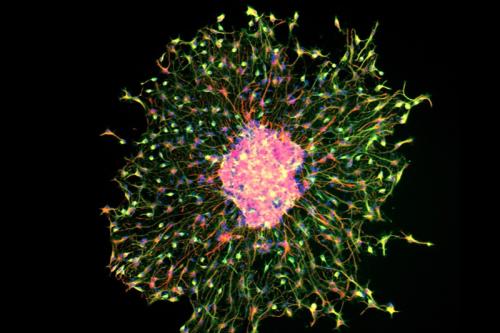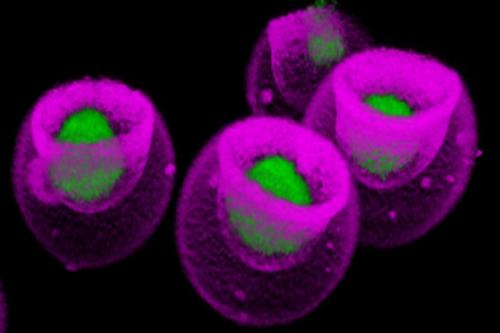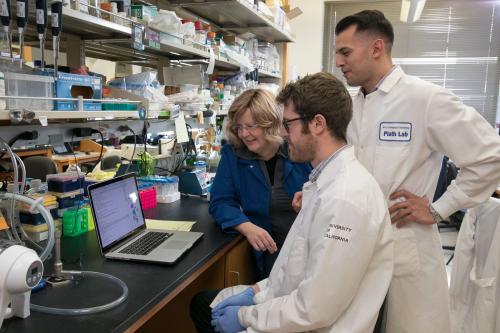
Stem Cell Biology

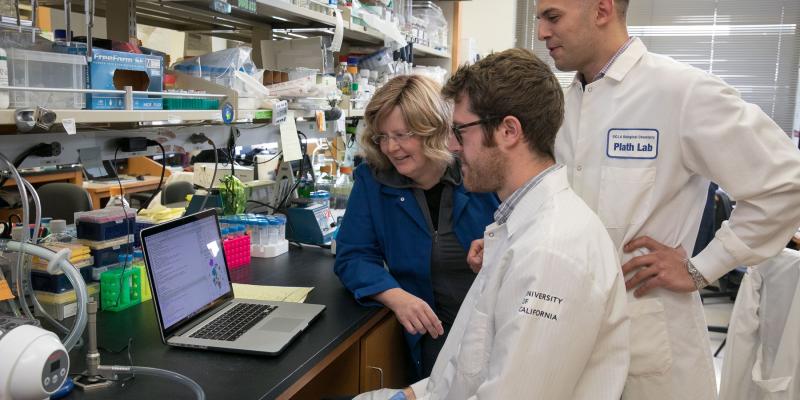
Overview
Stem cells Cells that have the ability to differentiate into multiple types of cells and make an unlimited number of copies of themselves. Stem cells Cells that have the ability to differentiate into multiple types of cells and make an unlimited number of copies of themselves. have the remarkable potential to self-renew and differentiate into the various specialized cell types found in the body. In addition to generating all the cells and structures of the human body, they serve as a sort of internal repair system, dividing to restore or replace cells lost throughout a person’s life. Our researchers are leveraging their expertise across a wide range of disciplines and technologies to build a deep foundational understanding of stem cell function, gaining critical insights into how stem cells can be harnessed toward new therapies that regenerate damaged organs, repair injuries and prevent age-related diseases.
Uncovering these underlying principles provides a solid framework for more applied research, yielding insights into humanity’s most complex medical mysteries and opening up avenues to enhance the body’s inherent ability to heal. Center members are developing improved methods to generate induced pluripotent stem cells iPS cells are cells taken from a patient that are reprogrammed so that they can undergo differentiation into any type of cell in the body. By maintaining the genetic code of the patient, iPS cells play a crucial role in disease modeling and regenerative medicine. induced pluripotent stem cells iPS cells are cells taken from a patient that are reprogrammed so that they can undergo differentiation into any type of cell in the body. By maintaining the genetic code of the patient, iPS cells play a crucial role in disease modeling and regenerative medicine. from patient cells and pinpointing the causes of our most intractable diseases using stem cell-derived 3D organoid 3D tissue grown from stem cells to replicate aspects of the structure and function of an organ. By modeling how multiple types of cells interact in biologically-relevant structures, these models help researchers understand how human organs develop, age and respond to disease in more detail than 2D cultures. organoid 3D tissue grown from stem cells to replicate aspects of the structure and function of an organ. By modeling how multiple types of cells interact in biologically-relevant structures, these models help researchers understand how human organs develop, age and respond to disease in more detail than 2D cultures. models. Through these approaches and a range of others, they’re uncovering the precise genetic networks that regulate the formation, maturation and function of tissue-specific cells, bringing us ever-closer to a new generation of cell-based treatments and cures.
Our Goals
- Identify the genetic and molecular mechanisms that enable stem cells Cells that have the ability to differentiate into multiple types of cells and make an unlimited number of copies of themselves. stem cells Cells that have the ability to differentiate into multiple types of cells and make an unlimited number of copies of themselves. to repair or regenerate tissue following damage, injury and disease in order to develop drug and cell therapies to enhance and accelerate this process
- Develop methods to prevent age-related diseases and prolong healthspan by studying how aging affects stem cell function and pinpointing factors that can prevent, slow or reverse the effects of aging
- Uncover how factors including genetic variation, metabolism and environmental stressors affect stem cell production and function
- Use stem cell-derived organoid 3D tissue grown from stem cells to replicate aspects of the structure and function of an organ. By modeling how multiple types of cells interact in biologically-relevant structures, these models help researchers understand how human organs develop, age and respond to disease in more detail than 2D cultures. organoid 3D tissue grown from stem cells to replicate aspects of the structure and function of an organ. By modeling how multiple types of cells interact in biologically-relevant structures, these models help researchers understand how human organs develop, age and respond to disease in more detail than 2D cultures. models to gain critical insights into how tissues and organs — including the heart, lungs and brain — develop, age and respond to disease
- Discover new therapies in an efficient and cost-effective manner using stem cell-derived disease-in-a-dish These models use lab-grown cell structures made from patient tissue samples to study human disease outside of the body. Cells are reprogrammed to a pluripotent state, then transformed into different cell types, allowing scientists to study disease processes in a controlled environment. They differ from organoids, which offer a more complex and organ-specific perspective, capturing cellular diversity and interactions. disease-in-a-dish These models use lab-grown cell structures made from patient tissue samples to study human disease outside of the body. Cells are reprogrammed to a pluripotent state, then transformed into different cell types, allowing scientists to study disease processes in a controlled environment. They differ from organoids, which offer a more complex and organ-specific perspective, capturing cellular diversity and interactions. models in combination with high-throughput drug screening technologies
- Examine the molecular mechanisms that control stem cell identity and fate to identify improved methods of generating induced pluripotent stem cells iPS cells are cells taken from a patient that are reprogrammed so that they can undergo differentiation into any type of cell in the body. By maintaining the genetic code of the patient, iPS cells play a crucial role in disease modeling and regenerative medicine. induced pluripotent stem cells iPS cells are cells taken from a patient that are reprogrammed so that they can undergo differentiation into any type of cell in the body. By maintaining the genetic code of the patient, iPS cells play a crucial role in disease modeling and regenerative medicine. for use in cell therapies
- Understand how the stem cells in plants and seaweeds influence their evolution and development — ultimately impacting our food systems, ecosystems and changing climate
Research Highlights
Uncovering the origins of blood stem cells
Center researchers develop a first-of-its-kind roadmap tracing how blood stem cells develop in the human embryo, providing a blueprint for producing fully functional blood stem cells in the lab.
Lab-grown eggs and sperm to treat infertility
UCLA study reveals timeline and pathway of germ cell development — crucial information that could help scientists generate egg and sperm cells in the lab.
Combating hair loss
Center members discover a new way to activate the stem cells in the hair follicle to make hair grow for people with baldness or alopecia, which is hair loss associated with hormonal imbalance, stress, aging or chemotherapy.
Defining stages of stem cell reprogramming
Our researchers unveil a critical new understanding of stem cell development, improving disease models and sources of patient-specific specialized cells suitable for replacement therapy.
Manufacturing blood stem cells
Center researchers lay the groundwork for generating blood stem cells in the lab that mirror their natural development, improving patient-specific therapies for blood-related diseases and cancers.
Identifying differences in reprogrammed cells
UCLA researchers found that cells reprogrammed into embryonic-like cells have inherent molecular differences and distinct gene expression signatures, inspiring additional research about the role they can play in clinical therapies.
Creating induced pluripotent stem cells
UCLA scientists reprogram human skin cells into cells with embryonic stem cell-like properties without using embryos or eggs, impacting disease treatment, tissue engineering and transplantation medicine.
Rejuvenating old stem cells
UCLA researchers discover that restoring a key antioxidant rejuvenates old muscle stem cells — a finding that could help improve the body’s ability to recover from injury as we age.
